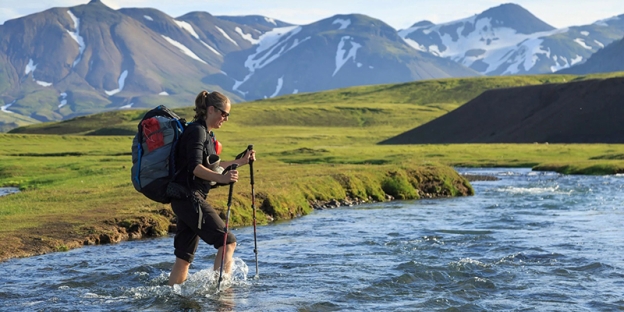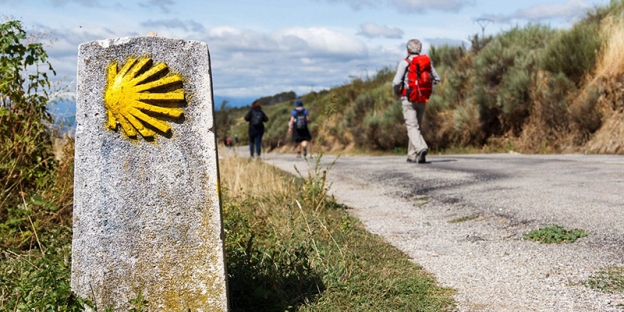6 Best Self-Guided Hiking Routes In Europe
Thinking about ditching the tour groups and doing things your way? Europe's got you covered. Whether you're walking across alpine ridges, through ancient villages, or along rugged coastlines, the continent is packed with routes made for self-guided adventures—no tight schedules.
No loud groups. Just you, your pack, and the trail ahead. Here are the top self-guided hiking routes in Europe for those who want the freedom to explore on their terms.
Tour Du Mont Blanc – France, Italy, Switzerland
If you're looking for a trail that ticks all the boxes—views, charm, variety—this is the one. The Tour du Mont Blanc circles the Mont Blanc massif, winding through three countries over roughly 170 kilometres. It's not exactly a secret, but it lives up to the hype.
Each day feels different. You might start your morning in a French alpine village, spend the afternoon in an Italian pasture surrounded by wildflowers, and end your day sipping hot chocolate in a Swiss chalet. There's a mix of steep ascents and mellow valley walks, which makes it manageable for people with some hiking experience.
You can complete the circuit in 10 to 12 days or tackle a few sections if you're short on time. The signage is excellent, making it easy to navigate. There are plenty of refuges, guesthouses, and small inns dotted along the way—perfect for a hot meal and a warm bed without the need to carry camping gear.
Laugavegur Trail – Iceland
If your idea of hiking includes lava fields, steaming vents, and rainbow-colored mountains, head to Iceland. The Laugavegur Trail stretches approximately 55 kilometres from Landmannalaugar to Þórsmörk, and it appears to belong on another planet.

It's best to walk this one in summer, ideally in July or August, when the trail is clear of snow and river crossings are manageable. Even then, the weather changes fast. One minute, you're under a clear blue sky; the next, you're pulling on every layer you've got. But that's part of the appeal.
Despite its remote vibe, the Laugavegur Trail is well-marked and features a few cosy huts along the way, providing an alternative to camping. Many hikers finish in four days, but you can stretch it longer by adding the Fimmvörðuháls pass and ending at the Skógar waterfall.
West Highland Way – Scotland
Scotland's West Highland Way runs from the suburbs of Glasgow to the town of Fort William, covering 154 kilometres of lochs, moors, and mountains. It's a tremendous first long-distance trail if you're easing into self-guided hiking.
The route is well-trodden, primarily, and doesn't require much tricky navigation. Still, it feels remote in places. You'll pass quiet lochs, walk through glens, and even spot red deer if you're lucky. The weather can be moody, but that's part of the Highland experience.
Most hikers take six to eight days to finish the route. You can stay in everything from simple B&Bs to cosy inns along the way. If you're not keen on carrying a heavy pack, some services will move your bags from stop to stop.
Rota Vicentina – Portugal
Want something sunny and coastal instead of alpine? Portugal’s Rota Vicentina is your answer. This network of trails runs along the country’s southwest coast, mixing sea cliffs, farmland, and sleepy villages.
The standout section is the Fisherman's Trail, which hugs the Atlantic for about 76 kilometres between Porto Covo and Odeceixe. This path was once used by locals heading to the best fishing spots—and it shows. You'll be walking on narrow sandy trails with waves crashing below and not much between you and the horizon.
Expect salty air, endless ocean views, and fresh seafood in every village. The trail is marked in blue and green, and you'll find small inns or guesthouses at most stopping points. It's best to walk between September and June to avoid the summer heat.
Alta Via 1 – Italy
If you like the sound of dramatic peaks, alpine lakes, and hearty food, look to Italy's Alta Via 1. The Dolomite trail runs north to south for approximately 120 kilometres, typically completed over 8 to 10 days.
The terrain can be challenging in places, but it's never dull. You'll cross high passes, walk past jagged limestone spires, and descend into lush valleys. Every day brings a new hut (or "rifugio") where you can grab a warm meal, a bunk bed, and sometimes even a cold shower.
This route is more rugged than others on this list, so it's better suited for those with good fitness and some mountain experience. That said, you don’t need to be a pro. Just bring sturdy boots and a sense of adventure.
Camino De Santiago (Camino Francés) – Spain
This one's less about wild landscapes and more about culture and history. The Camino Francés is the most popular route of the Camino de Santiago, spanning approximately 800 kilometres from Saint-Jean-Pied-de-Port in France to Santiago de Compostela in Spain.

Don't worry—you don't have to do the whole thing. Many walkers start in León or Sarria and still experience the entire Camino. Expect quiet mornings, friendly greetings of "Buen Camino," and pilgrim menus in every town.
Unlike other hikes, this one is lined with cafes, hostels, and villages every few kilometres. You'll never feel too far from civilisation. And while it's not a wilderness hike, it's ideal for solo travellers who want to walk at their own pace.
Planning Your Own Self-Guided Hike
Europe makes it surprisingly easy to travel independently. Most of these trails have good infrastructure—waymarks, places to sleep, and plenty of info online. Still, a little prep helps.
Pack layers, even in summer. The weather can turn fast, especially in the mountains. Book your stays in advance on popular routes, especially during high season. And download an offline map just in case.
Walking solo means you're in charge of the pace, the stops, and the detours. It's your hike, your way. And that's the beauty of it.
Where Your Boots Take You?
There’s something special about walking a path on your own. No schedule. No chatter. Just a trail and the world around you. From the Scottish Highlands to the coasts of Portugal, these self-guided hiking routes in Europe give you space to breathe, time to think, and places you’ll never forget. All you have to do is start walking.